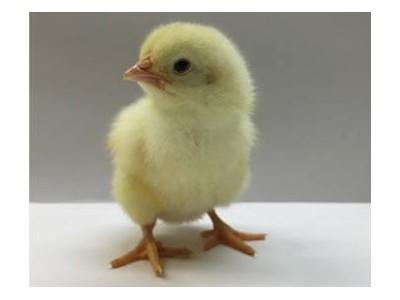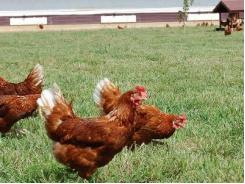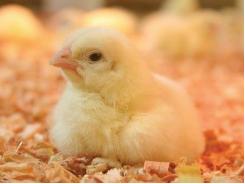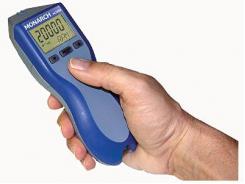Overheating in incubation and its impact on broiler performance

This looks to be a good quality chick, but could we have affected its performance on the farm because we have not achieved the optimum incubation conditions?
Incubation temperature impacts embryo growth and development rate, and ultimately influences broiler weights.
No matter how good or bad you are at incubating your eggs, you will always produce many good-looking chicks, especially from prime flocks with good fertility.
Unfortunately, you cannot look inside each chick and say which chicks have the best-developed hearts, livers, digestive organs and the correct residual yolk sac weights. But all these organs are affected by how well we have incubated our eggs and, as a result, hatchery managers can have a bigger effect on broiler performance than they ever imagined. Hatchery managers can affect the broiler weights going into the processing plant and, in an integrated company, can directly affect the profit/loss of the company.
All hatchery managers are aware of the need to provide certain basic requirements during incubation such as temperature, humidity, egg turning and ventilation.
Consequences of high temperatures
All of these things are important, but in this article I will focus only on temperature, and the consequences of high temperature during incubation for broiler performance.
Temperature controls embryo growth and the rate of development, but embryos cannot regulate their own temperatures during incubation.
During the first nine days of incubation, embryos are small and have little activity. Therefore, heat production from the embryos is insufficient to maintain optimal temperature. Heat has to be absorbed from the environment, i.e. from the air of the incubator. Eggs are also continuously losing water to the environment by the process of evaporation making the egg shell surface temperature lower (by about 0.1C) than the surrounding air or set point of the machine.
When temperatures rise
After nine days of incubation, embryos become more active and heat production rises daily. This heat has to be lost into the environment if embryo temperatures are to remain within comfortable limits (Figure 1). It is not unusual for eggshell surface temperatures to be 0.2C higher than the surrounding air. So, in the second half of the incubation period, it becomes important to gradually reduce the set point of the machine in order to prevent embryos from becoming too hot.
It is best not to think in terms of your set-point temperature program, but to adjust your set points based on the egg shell temperatures you actually measure daily. The best target egg shell temperature appears to be 37.8C (100.0F) from the beginning of incubation to time of transfer of the eggs to the hatcher. Set-point temperatures should also be reduced gradually farther in the hatcher.
The results of trials conducted at the Aviagen product development center in the U.S. indicate the effects of incubating eggs too hot.
Three consecutive trials were run, using two Aviagen breeds, including a high-breast-meat-yield chicken, and a competitor strain, to investigate the impact of raised incubation temperature on hatch, chick quality and broiler performance. The results reported here were from the conventional Aviagen broiler product, in the second trial.
Egg shell temperatures were recorded using Gemini data loggers feeding to a wireless broadcast system that could be interrogated in real time. Incubator conditions were changed as necessary to maintain the desired eggshell temperature.
During the first 10 days of incubation, all the eggs were incubated with a target eggshell temperature of 37.8C. From 11 days of incubation through to transfer at 18 days, the eggs were incubated with an eggshell temperature of either 37.8C, 38.1C, or 39.4C. After hatch, we evaluated the chicks and grew them on our research farm.
More quality chicks
The results showed the treatment of 37.8C throughout the incubation period resulted in better hatchability and a higher percentage of first quality chicks (fewer red hocks and poor navels), higher broiler weight and better livability compared to the higher temperature treatments (Figures 2 a, b, c). In another trial, chicks were examined immediately after take-off and those on the control treatment (eggshell temperature of 37.8C) had bigger hearts, gizzard, and small intestines as a percentage of yolk-free body weight and a lower residual yolk weight than those incubated on the two hotter treatments.
So, high embryonic temperatures during incubation accelerate embryo development, causing chicks to hatch early with large residual yolk sacs. But, high temperature also affects the growth and development of many internal organs, especially the heart. Too much heat reduces heart size relative to body weight. This means the heart will have to work hard to support fast growth on the farm.
Finally, too much heat reduces the size of the digestive organs, which compromises the genetic potential for growth. All three of the commercial crosses included in the trial were affected to the same extent by higher temperatures, both in the hatchery and in the broiler house. It is often suggested that higher-yield breeds are less able to deal with high incubation temperatures. However, in these trials there was no evidence that the high-yield breed was more or less sensitive to high incubation temperatures than the other breeds.
Hence, in order to produce a good-quality broiler, it is important to set a target for egg shell temperature of 37.8C. In this way, you can help your company achieve not only good hatchability and good chick quality, but also good broiler performance on the farm.

Embryos that have been overheated hatch into chicks that do not grow as well as those that have been incubated at the correct egg shell temperature.

Incubation at 39.4C egg shell temperature produced chicks which were less robust than those incubated at a lower temperature.

When egg shell temperature is allowed to exceed 37.8C, fewer chicks will hatch.

The graph shows that heat output from the embryo starts to rise rapidly after nine days of incubation.
Related news
Tools

Phối trộn thức ăn chăn nuôi

Pha dung dịch thủy canh

Định mức cho tôm ăn

Phối trộn phân bón NPK

Xác định tỷ lệ tôm sống

Chuyển đổi đơn vị phân bón

Xác định công suất sục khí

Chuyển đổi đơn vị tôm

Tính diện tích nhà kính

Tính thể tích ao




 The 5 largest poultry, egg producers in Europe
The 5 largest poultry, egg producers in Europe  8 broiler house management tools to improve performance
8 broiler house management tools to improve performance